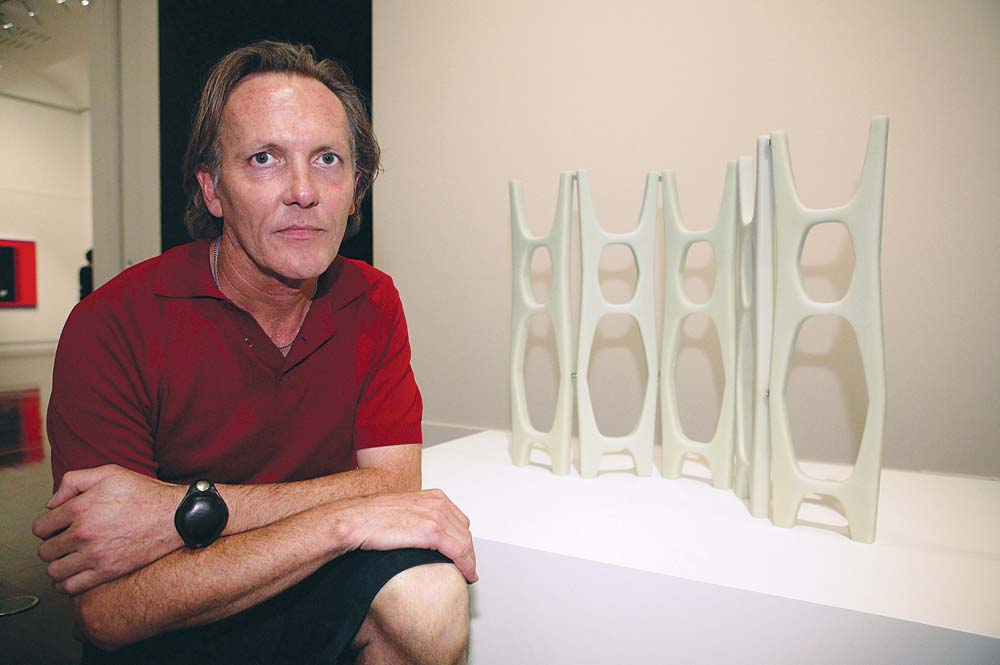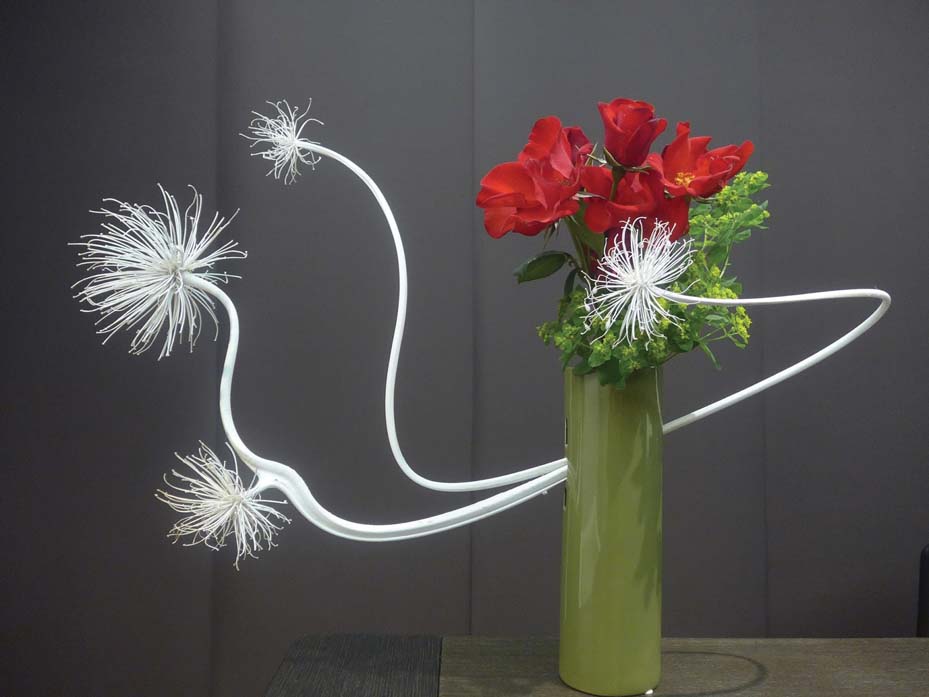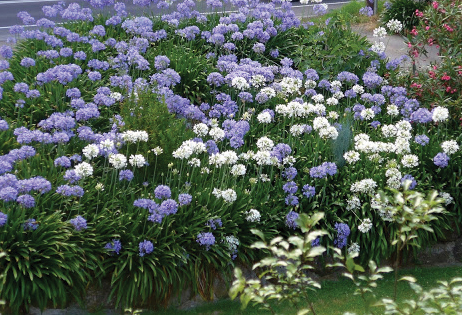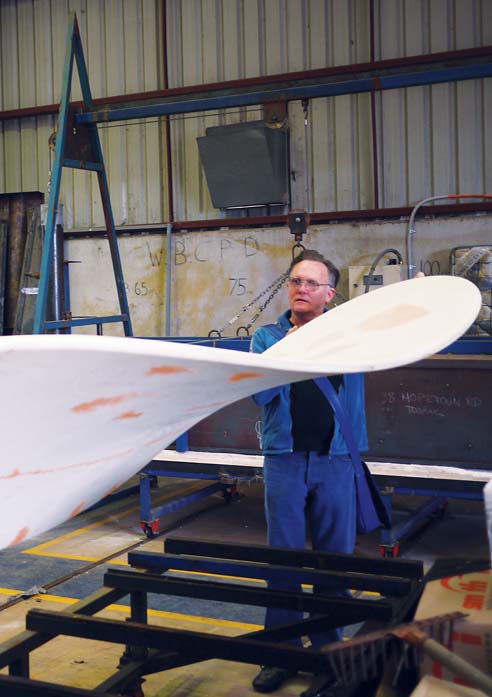
In John Meade’s words he is “not afraid of beauty”, and it shows in his sculptures which reflect the magnificence of nature, the human spirit, and the human form. This year, the peninsula is lucky enough to witness one of Meade’s stunning works when Love Flower is unveiled on the Peninsula Link’s Cranbourne Road exit. The sculpture by John Meade and Emily Karanikolopolous will replace Gregor Kregar’s sculpture Reflective Lullaby.
The monumental and enchanting new sculpture is part of unique and award-winning commitment to public art, with Meade and Karanikolopolous recipients of the $250,000 2018 Southern Way McClelland Commission. Peninsula Essence talks to artist, John Meade, about his magnificent sculpture and the collaboration with fellow artist, Emily Karanikolopolous.

“I believe Love Flower will be installed around September – October and it has been a long process involving collaboration with Emily to get it to this point,” said Meade. “Currently it is being constructed by a Brisbane company off the coast of Singapore, but I will be going over there towards the end of July before it is shipped over.”
With around 67 proposals submitted, Meade said he was thrilled to be chosen as his family has a connection to the Langwarrin area as well as the Mornington Peninsula.
“I felt like it was a wonderful tribute to my parents who are no longer with us, but lived in Langwarrin for many years. I still have family on the peninsula and surrounding area as well,” said Meade, who was inspired by his love of ikebana, a type of Japanese floral arrangement. “There are different types of ikebana but this is sogetsu ikebana which is a more modern take. Decades ago, in the 1980’s I was interested in the flower arranging art form. I was living in Sydney and had seen work by some of the masters. When I moved to northern NSW for a while, I found a teacher and did some initial courses there. I guess that was the preliminary step towards the sculpture as I kept on the look-out for it as time went on. About three years ago I found a work by Emily who is from the Melbourne ikebana chapter, contacted her and went to meet her at her home. That is when the process of the sculpture began.”

For Meade, who has a personal interest in ikebana, and Karanikolopolous who started studying the ancient Japanese floral art 28 years ago, it was the perfect combination.
“Part of my development in terms of my own artistic history has been the art of ikebana, and Emily has been practicing and teaching it for many years. Our Love Flower is based on the agapanthus flower and she has many of them on her property; she ties the stem, then dries them and sprays them white. She uses them after they have lost their petals and they are beautiful. Love Flower is an evolution of that in sculpture form,” said Meade of the plant that is often seen as roadside foliage and creates a beautiful abstract form. “Love Flower is like an ikebana arrangement with two stems of agapanthus, ten metres high. At the end point we have a star burst of flower with fibre optic cable lights that will look like fireworks in the night.”
Meade says the name Love Flower literally comes from the etymology of agapanthus.
“The reason it is called Love Flower happened just a couple of days before I submitted the proposal. I was thinking about the agapanthus and I looked up the root of the name. It is from Greek etymology and is divided into two words. One is agap which means God’s love and the other is anthos which means flower so it is like a platonic love,” said Meade, who didn’t begin his working life as an artist.
“I actually didn’t get into sculpting until I was 35. I was a bit of a drifter, did a bit of window dressing and so I always had that artistic side. It’s funny. When I told my friends and family I was going to study art, they said ‘It’s about time’,” he said with a laugh.
These days, Meade tries to incorporate beauty as much as possible into his work.

“I do a lot of different sculptures but I always like the piece to be aesthetically engaging. I am not afraid of beauty and try to incorporate some forms of beauty into the things I make. This sculpture is a little different from my usual style but still has the element of having a light touch which I try to achieve.”
As for inspiration, Meade says it doesn’t stop. “I look around through my day and notice things online or on the street. I passively collect things but more consciously than I used to. If I have an idea and the idea persists, it usually presents the possibility of a sculpture. Sometimes that can be a long process. Love Flower definitely was; from the first meeting at Emily’s and proposing it, taking a whole year of growing agapanthus and bending them, and then putting together the dried pieces into a sculpture format, to the building of the sculpture, it has been a lengthy process,” said Meade. “The good thing is the actual sculpture hasn’t changed much from the original form.”
Even with sculptures that have been displayed as commissions or exhibitions, Meade says he believes he can always do better, and it’s more about the viewer’s appreciation than anything. “One of the best sculptors ever is Bernini, and of his baroque sculpture, Ecstasy of Saint Teresa, he said it is ‘his least bad work’. That is how I feel but I do see it as a gift to the viewer which is wonderful to be able to do.”
